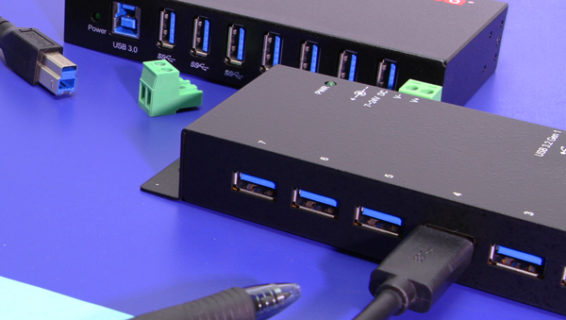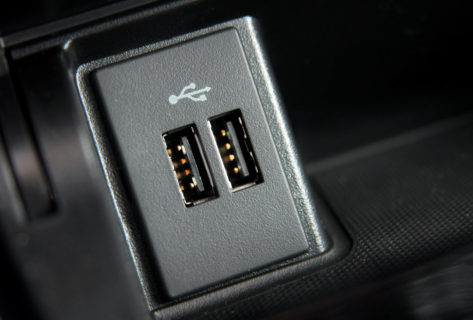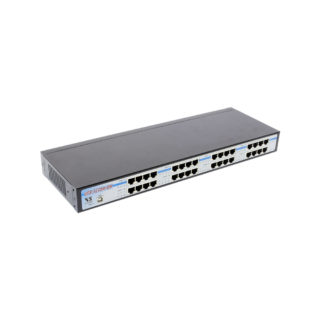Data Centers: The Hardware Behind Modern Infrastructure
Data centers are the backbone of organizations’ IT infrastructures, and they aren’t going anywhere. With an estimated 7 million data centers worldwide, the data center industry is projected to grow from $466 billion in 2020 to $948 billion by 2030, according to GlobalData.
And they are evolving with the times, to an extent. Data center infrastructures were at one time on-site servers that have now gone virtual to support multiple cloud applications. Data centers house mission-critical data and applications, and as they are relied upon by nearly all businesses and government entities, it is essential that these facilities and their equipment are protected. Optimizing space and controlling the environment to maintain equipment within specified temperature and humidity ranges is crucial, but there is a pressing concern over data centers’ capacity to withstand the current climate crisis.
Heat Waves: The New Normal
Climate change is causing more volatile and extreme weather, which will only increase as greenhouse gas emissions increase. Global temperatures are likely to rise 2.7°F above pre-industrial levels in the next five years, according to the World Meteorological Organization (WMO).
Our reliance on data centers for housing our knowledge and 24/7 global operations means that it is imperative that they can continue operating through a new normal of rising temperatures. Just this past week, it was reported that Google Cloud’s data centers in London went down due to a cooling system failure during a surge in record high temperatures. And it wasn’t just those near the center who were affected by the shutdown. Customers in the US and Pacific region had their access to Google services disrupted. US customers also experienced outages due to Oracle’s cloud data center, located in the UK, affected by the record heat.
But is this just a fluke? An anomaly in the meteorological record? Not according to the World Meteorological Organization (WMO). They report that there is a 93 percent chance that one of the next four years will be the warmest on record. And it won’t be a one-time occurrence. According to Petteri Taalas, secretary general of WMO, temperatures will continue to rise as long as greenhouse gases are emitted into our atmosphere. Taalas warns that as our oceans continue to become warmer and more acidic, sea ice and glaciers will melt, sea level will rise, and our weather will become more extreme. All man-made infrastructure, including the data centers that keep our collective knowledge online and functioning, will be affected by these weather pattern shifts.
Data center cooling systems were not designed to handle the higher temperatures we are seeing now. According to Jon Healy, director of Keysource, the UK data center consultant group, “It wasn’t that long ago that we were designing cooling systems for a peak outdoor temperature of 32 degrees.” But temperatures in the UK just peaked at a whopping 40 degrees Celcius (104 degrees F) and summer is nowhere near over in the Northern Hemisphere. Data centers will need to adapt as heatwaves become more common, otherwise they will suffer outages and reduced performance, and one can only imagine the chaos that will ensue with multiple, prolonged outages.
Climate Solutions For Data Centers
Extreme temperature spikes, such as those experienced recently in Europe and the US, make data centers more susceptible to overheating and reduced performance. During these heatwaves, companies pay more for cooling energy and equipment, which has become more costly from rising energy prices.
While the costs of a heat wave here-and-there might be minimal, rising temperatures and climate change risks mean extreme weather is only going to become more frequent, and thus, more costly. Climate change means that to protect the brain of their organizations, they must adapt to extreme temperature changes and invest in resources that protect their IT infrastructure and data centers.
Preparation is key. According to Simon Harris, head of critical infrastructure at Business Critical Solutions, a data center consultant group, there is a problem with existing data centers built in the UK and Europe and their ability to handle rising atmospheric temperatures. According to a survey by the Uptime Institute, a digital services standards organization, 45 percent of US data centers have experienced extreme weather events.
In the age of Covid-19, most companies are migrating to the cloud, which is typically driven by off-premise data centers. A cooling system is required to operate these centers efficiently between 15 and 32°C (59 and 89.6F). As heatwaves become more common, the investment in more powerful cooling systems will be necessary.
It takes a complex, multi-stage process to build a data center cooling system, according to Sophia Flucker, director of UK consulting firm Operational Intelligence. One way to approach this is by building a data center in close proximity to a weather station to analyze temperature data.
Nordic countries are popular locations for building data centers, as cooling is free. This solution, however, is not long-term. There are not enough power sources in these countries to power all global data centers, and latency issues are driving a trend toward small data centers near the edge of the network and near devices that generate data. What’s more, it is likely that these Nordic data centers will experience overheating issues in the next five years.
A Self-Perpetuating Problem and Long-Term Solutions
Data centers, while critical at keeping businesses and governments powered and functioning, are notorious for being energy-intensive facilities. The problem is cyclical – to protect our IT infrastructure from climate change requires significant cooling energy, which contributes to greenhouse gas emissions, which then contributes to climate change.
To reduce emissions, some companies are reusing the heat they generate. For example, the heat generated by Amazon’s data centers in Ireland is harnessed and used to heat houses. Danish Meta Platforms also reuse heat – one data center has the ability to heat 6,900 homes with the heat it generates.
Optimization of workloads for computational efficiency can also reduce heat output. It is possible to reduce computation-intensive tasks and not run them locally. The use of carbon-friendly coding is also becoming more popular among developers.
It will become increasingly necessary to equip these centers with sophisticated cooling systems powered by renewable energy, and enact energy efficiency measures as temperatures rise. Coolgear provides custom solutions to power the world with Industrial-Grade USB Hubs, Chargers, and Serial Products backed by superior build quality and advanced engineering.
As global operations rely heavily on data centers as the backbone of their IT infrastructure, long-term energy efficient solutions must be adopted to ensure their security, fewer emissions and renewable energy. We’ve got the gear to keep it going.
Sources:
https://www.paloaltonetworks.com/cyberpedia/what-is-a-data-center
https://www.wired.co.uk/article/data-centers-climate-change
https://www.n-ix.com/data-center-migration-challenges/





















